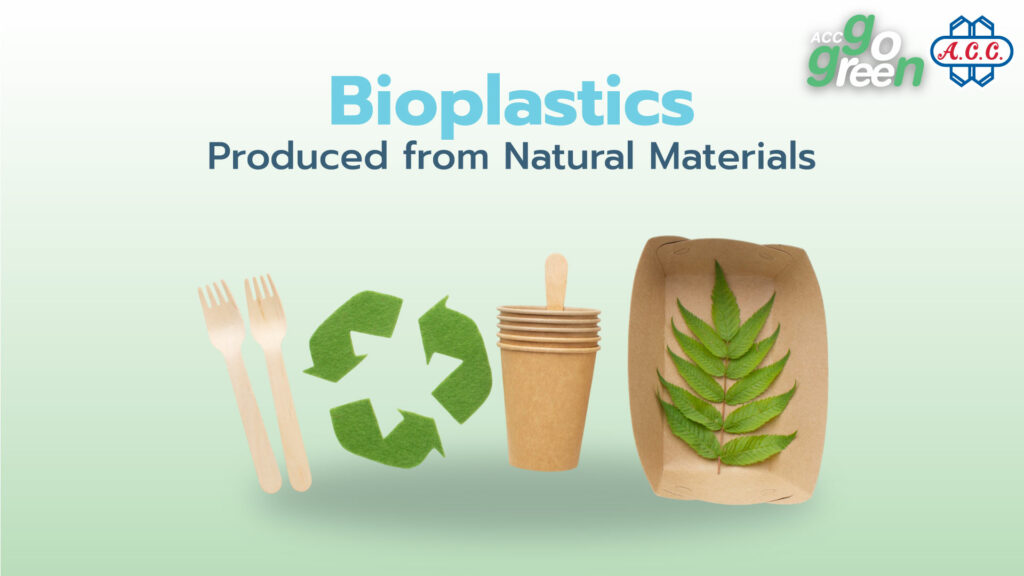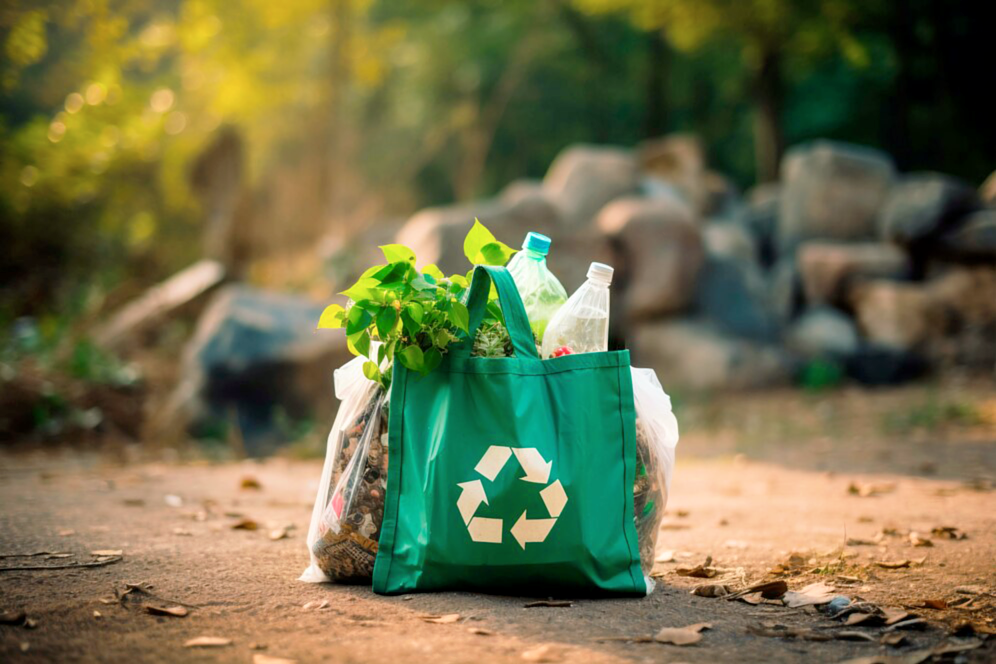Currently, “Bioplastics” are perceived as environmentally friendly alternatives. However, in reality, there are several aspects that many may not be aware of regarding their hidden impacts.
What Are Bioplastics?
Bioplastics are plastics produced from biomass materials such as corn, sugarcane or cassava, instead of using petroleum as the primary raw material like conventional plastics. Additionally, some types of bioplastics are biodegradable, offering another option to reduce the problem of plastic waste lingering in the environment.
Types of Bioplastics
Bioplastics can be divided into two main categories based on their biodegradability:
-
Bio-based, Non-Biodegradable Plastics
Although these plastics are produced from plants, their structures remain similar to conventional plastics, making them non-biodegradable under normal environmental conditions.
-
Bio-PE (Bio-based Polyethylene): Produced from sugarcane but possesses properties similar to conventional PE plastic.
-
Bio-PET (Bio-based Polyethylene Terephthalate): Used to make beverage bottles and can be recycled like regular PET.
-
Biodegradable Plastics
These plastics can decompose under suitable conditions, such as industrial composting facilities.
-
PLA (Polylactic Acid): Made from corn or sugarcane, used for food packaging.
-
PHA (Polyhydroxyalkanoates): Produced by bacteria that digest sugars, with the potential to biodegrade in nature.
-
PBS (Polybutylene Succinate): A flexible plastic that biodegrades better compared to PLA.
 Although bioplastics account for only 1% of global plastic production, they are rapidly growing due to the environmental conservation trend. However, there are still several concerns that need to be considered.
Although bioplastics account for only 1% of global plastic production, they are rapidly growing due to the environmental conservation trend. However, there are still several concerns that need to be considered.
Resource Utilization in Production
While bioplastics help reduce reliance on fossil fuels, their production requires agricultural resources such as land, water and fertilizers, which may compete with food production and affect food security. Moreover, the use of fertilizers and chemicals in cultivating crops for bioplastics can lead to environmental pollution.
Bioplastics and Brand Image (Greenwashing)
Many brands have adopted bioplastics to meet sustainability marketing goals. However, in many cases, bioplastics are used as tools to create an eco-friendly image rather than genuinely changing production systems or resource usage approaches. This may constitute greenwashing, misleading consumers into believing that the products are truly environmentally friendly.
For instance, switching to bioplastic packaging while still using multilayer packaging or not reducing overall plastic usage may not genuinely reduce environmental impact but instead create confusion and misunderstandings among environmentally conscious consumers.
Greenhouse Gas Emissions Throughout the Life Cycle
Although bioplastics are derived from plants, analyzing from a Life Cycle Assessment (LCA) perspective reveals that the production, processing and transportation of biomass materials emit greenhouse gases (GHG) in amounts comparable to or even exceeding those from petrochemical plastics, especially if not sourced from sustainable agriculture or if large amounts of chemicals are used in the production process.
Furthermore, if bioplastics are incinerated instead of being recycled or biodegraded, they may release CO₂ back into the atmosphere, similar to conventional plastics.
Impact on Biodiversity
Large-scale monoculture cultivation for bioplastics, such as corn or sugarcane, may lead to the conversion of natural forests into agricultural land, excessive use of chemicals, and degradation of ecosystems, particularly in developing countries where land is transformed to meet global market demands. This directly affects biodiversity, wildlife and accelerates soil degradation.
Consumer Understanding
Even though bioplastics are increasingly available in the market, most consumers still misunderstand the term “biodegradable” Many believe it means rapid natural decomposition, leading to irresponsible disposal behavior, resulting in “psychological littering” discarding waste without concern because they think, “It’s okay, it will biodegrade.”
 Bioplastics Waste Management
Bioplastics Waste Management
The decomposition of bioplastics requires specific conditions, such as appropriate temperature and humidity, typically found in industrial composting facilities. If bioplastics are discarded in general environments or in unsuitable waste management systems, they may not decompose as expected and cause waste problems similar to conventional plastics.
Therefore, it can be said that “bioplastics are not villains, but they are not a complete solution” and true sustainability depends on the consumption behavior of all of us.
Misconceptions About Recycling
Some types of bioplastics such as PLA, cannot be recycled with conventional plastics due to different melting points. Mixing bioplastics with regular plastics during recycling may reduce the quality of recycled products. Hence, proper waste separation and management are crucial.
Health Impacts
-
Food Contamination:
Microplastics from bioplastics may re-enter the food chain. A survey by the World Health Organization (WHO) found that 83% of drinking water contains microplastic contamination.
-
Chemical Residues:
Additives in bioplastic products such as ATBC (which enhances strength, flexibility and accelerates decomposition), flame retardants (which reduce flammability) and benzotriazole (which prevents UV degradation), may contaminate food, especially when in contact with fats or heat, affecting hormonal systems, the nervous system and increasing cancer risk.
Environmental Impact
Although bioplastics reduce fossil fuel usage, some types require high energy for production and decomposition. If discarded in general environments, they may take years to decompose. Additionally, there are concerns about competition for agricultural resources, as crops used to produce plastics, such as corn and sugarcane, may compete with food production, affecting food security and agricultural product prices.
Do Bioplastics Truly Help Reduce Global Warming?
Research from MIT and the Journal of Cleaner Production indicates that the production of certain bioplastics may emit more carbon dioxide than expected if not properly managed.
Even though bioplastics help reduce the use of fossil and petrochemical plastics, there are still health and environmental concerns. A more sustainable solution is to seriously reduce plastic usage, reuse materials and develop alternative materials with minimal environmental impact.
Conclusion
Although bioplastics have the potential to reduce reliance on fossil fuels and mitigate plastic waste issues, there are still concerns regarding health and environmental impacts. Careful consideration of the production, usage and waste management of bioplastics is necessary to ensure that this option is genuinely environmentally friendly.


